|
THE RUDSTONS OF HAYTON AND ALLERTHORPE
by Andrew Rose
The history of the Rudston family of Hayton and Allerthorpe is one of the longest and most interesting of all the many ‘county’ families of Yorkshire. Supported by a unique family archive, dating back to 1465 the Rudston connection can be traced back to the early 1100s.
The surname 'Rudston' may derive from the 7.6 metre high standing stone still to be seen in the eponymous village of Rudston, near Bridlington, a settlement name found in the Domesday Book of 1086.
After the Norman Conquest, the estate of Hayton was granted by King Henry I to Nigel d'Aubigny (whose descendants adopted the surname 'de Mowbray') between 1108 and 1115. St Martin's Church, which may have replaced an earlier chapel probably dates from around this time, as well as manor house and water mill, earthwork evidence of which is still to be found behind Manor Farm in Hayton.
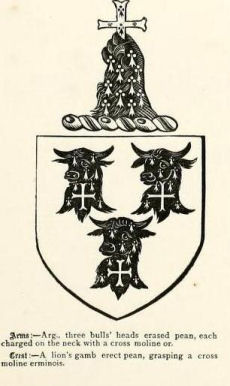 The Rudstons are thought to be linked to the family of de Gant, who held lands near Bridlington in the early twelfth century. The marriage of Alice, sister of Gilbert de Gant, to Roger de Mowbray in 1142/43 may have brought a member of the Rudston family to Hayton.1 Before about 1166, the manor was held from the Mowbrays by Richard de Moreville, who made several grants of land in Hayton to St. Mary's Abbey in York. At a date between 1166 and 1175 he 'sub-let' his land in Hayton to Roger de Rudston, and so appeared the first recorded member of the family that was to dominate Hayton for most of the next 750 years.2 The Rudstons are thought to be linked to the family of de Gant, who held lands near Bridlington in the early twelfth century. The marriage of Alice, sister of Gilbert de Gant, to Roger de Mowbray in 1142/43 may have brought a member of the Rudston family to Hayton.1 Before about 1166, the manor was held from the Mowbrays by Richard de Moreville, who made several grants of land in Hayton to St. Mary's Abbey in York. At a date between 1166 and 1175 he 'sub-let' his land in Hayton to Roger de Rudston, and so appeared the first recorded member of the family that was to dominate Hayton for most of the next 750 years.2
Left: Coat of Arms of Rudston-Read (Ref: Foster, J, Pedigrees of the County Families of Yorkshire Vol II North and East Riding (W Wilfred Head 1874)
The Rudstons are also recorded as holding land in Lincolnshire, at Haydor, c1160-1220, when Walter de Rudston gave and, a mill and his 'capital messuage' at Hayton to York Minster.3
Sir John Rudston is said to have been Lord of the Manor of Hayton in 12054 but - as with many other antique lineages - there has been some controversy about the exact pedigree of the Rudston family.5 There is evidence6 that Rudstons continued to hold the lands during the 14th and 15th centuries, intermarrying with other local landed families and acquiring other landholdings in both the East and West Ridings. A marriage agreement survives, dated 1465, between John Rudston of Hayton and one William Gunnays, regarding their respective children Roberrt and Agnes, with reference to lands at Hessle, Hayton, Holme-on-Spalding Moor and Pocklington.7
1536 saw the Pilgrimage of Grace, a major northern rising in protest against Henry VIII's break with Rome, the dissolution of the monasteries and the pro-Protestant policies of Thomas Cromwell. Among the leaders were Sir Robert Constable, Robert Aske, and Nicholas Rudston of Hayton.8 Rudston, regarded as 'one of the chief doers of the business'9 , swapped sides and was instrumental in the condemnation of Robert Constable (Rudston's brother-in-law), who was executed for treason in 1538.
Earlier that century, John Rudston, Nicholas Rudston's uncle, had gone south, prospered as a draper in London, and became Lord Mayor in 1528 (gaining a knighthood in the process). In later generations of the family, younger sons 'sought their fortune in London, especially in the cloth trade.'10 His son, Robert Rudston (b1514), a protegé of the Constable family, seems, like his cousin Nicholas, to have been politically astute, avoiding problems after Robert Constable's execution. Young Rudston travelled to the continent with Sir Thomas Wyatt, the courtier and poet (rumoured to have been the lover of Anne Boleyn), who was Henry VIII's Ambassador to the Holy Roman Emperor.
Robert Rudston served briefly as a soldier, taking part in military operations against the French at Boulogne in 1543-4, along with Wyatt's son, Thomas, from whom Robert purchased the manor of Boughton Monchelsie, near Maidstone in Kent.
During the reign of Edward VI, Rudston became MP for Steyning in Kent, later joining Wyatt's abortive rebellion against Mary I. This was ostensibly a protest against her marriage of Philip of Spain, but in reality a Protestant plot to dethrone the Catholic Queen. Rudston took part in the march on London, but was arrested and sent to the Tower. Wyatt was executed and Rudston was also condemned to death. A lucky man, he was pardoned by the Queen (probably at the intercession of a kinsman, Nicholas Wotton, highly skilled diplomat and Mary's Ambassador to France), later prospering under the reign of Elizabeth I.11
In those turbulent time, religious influences were fluid. Nicholas Rudston of Hayton may have changed over to the new religious settlement, but his daughter, Ursula, married to Robert Wright of Plowland Hall in Holderness, adhered passionately to Catholicism. Ursula spent fourteen years in gaol, imprisoned 'for the Faith', during the latter part of the 16th century, a factor which probably helped radicalise her sons, John and Christopher Wright, Gunpowder Plot conspirators of 1605.12 The Wright brothers both died when Holbeche House, Staffordshire, was stormed by government forces after the discovery of the plot.13
Nicholas Rudston was succeeded by his second son, John, who married Margaret, daughter of Thomas Trollop of Thornley in Durham, another prominent Catholic, who also suffered imprisonment for 'recusancy'. Trollop sheltered several priests and narrowly escaped execution on the orders of Elizabeth's ruthless Chancellor, William Cecil, Lord Burghley.14
Walter Rudston, John's eldest son, succeeded to Hayton in 1618.15 He renewed the earlier marriage connection with the Catholic Constable family by marrying Frances, daughter of Marmaduke Constable, younger brother of Sir Philip Constable of Everingham, a major landowner in East Yorkshire. By contrast, the Rudston inheritance was relatively modest. 'It was flat or gently rolling farming country, suitable for a variety of crops, vegetables and 'beasts'. There were rabbit warrens. Some of the land was wooded; some of it was a bog.'16
The accession of Walter's eldest son, also Walter, opens another eventful chapter in the Rudston family history. In 1631, he married a remarkable woman, Margaret Dawnay, daughter of Sir Thomas Dawnay of Cowick and Sessay, High Sheriff of Yorkshire in 1610, and Faith Legard, member of another locally prominent landed family. At some stage, this generation of the Rudston line abandoned their Catholic heritage and conformed to the established Church of England.
In 1639-40, Walter Rudston fought for the King in the 'Bishops' Wars' against the Calvinist Scots, who had rejected the English Prayer Book, and were eager to enforce their religious views, not only in Scotland, but elsewhere in the British Isles. These struggles brought on the English Civil War, which began in 1642. Shortly before this conflict began, King Charles I visited Hayton on his way to Hull to demand the surrender of the arsenal there. In return for Rudston's hospitality at Hayton, Charles conferred a baronetcy on Walter Rudston.
Nevertheless Walter, although a royalist by temperament, hoped that the conflict between King and Parliament could be avoided and his support for Charles became somewhat lukewarm. The country, he thought, needed both institutions and he was unwilling 'to meddle between the bark and the tree.'17 His refusal to help the King in 1643 resulted in arrest at gunpoint, seven weeks' imprisonment, and the occupation of Hayton by Royalist soldiers, with associated plunder.
There is a tradition in Hayton that a skirmish took place during the Civil War, victims of which are buried in an unmarked grave in the churchyard. A substantial number of musket balls have been found which may relate to this.18 There is also a curious tunnel (now blocked off), leading from the site of the Manor House to the church, which may have played a role at this time as a means of escape.
Although in 1644 Walter Rudston took an oath to support Parliament, now gaining the upper hand, he was suspected of having assisted the King's cause. Part of his estate was confiscated and proceedings against him for 'delinquency' continued for several years after his death in 1650. His widow, Margaret, fought gamely on her family's behalf, defending her family's interest in several legal actions until the Restoration of 1660, the year her eldest son, Sir Thomas Rudston, attained 21, the year of his majority.
The original manor house had been destroyed during the Commonwealth. Young Sir Tom celebrated his inheritance by building Hayton Hall, a fine house in the fashionable Dutch style. In 1679, aged 40, Tom married Catherine, daughter of George Montaigne, nephew of an Archbishop of York, Squire of Westow in Ryedale, who - unlike Tom's father - was active in the Royalist cause during the Civil War as a cavalry officer.
Margaret Rudston, matriarch of her family, died in 1699 at the age of 103. Tom's son, also Thomas, the third Rudston baronet and 'something of a tearaway'19 , died unmarried aged 28 in 1709, only two years after his father's death. The estate passed to his sister. Elizabeth Rudston had married to Henry Cutler, a descendant of Henry VII, whose family had suffered severely for their commitment to the royalist cause in the Civil War. Difficulties were compounded by the feckless habits of Henry's father, the second Sir Gervase Cutler. In 1708, Henry sold the family seat, Stainborough Hall (now Wentworth Castle). His other inherited properties were also sold to support his family and Henry had to shift for himself, running a colliery in south Yorkshire.20 The couple had no children.
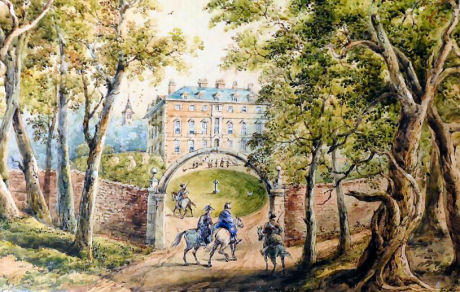 {Illustration above is of Hayton Hall from a painting by George Richard Vawser ] {Illustration above is of Hayton Hall from a painting by George Richard Vawser ]
After Henry's death , Elizabeth Cutler lived on at Hayton for many years, dying in 1745. She was buried in Hayton Church. By the rule of primogeniture, estates normally passed to the nearest living male relative and Elizabeth adopted Rudston Calverley, then a small boy, as her 'cousin and heir-general' Rudston appears to have been her second cousin two generations removed. Over the years, this line of descent had become somewhat declassé. By the time Elizabeth died, Rudston's father was working as a ropemaker in Hayton.
At his majority in 1759 and in accordance with Elizabeth's will, Rudston adopted her maiden surname by Royal Licence, becoming known - rather grandly - as 'Rudston Calverley Rudston', holder of the Rudston grant of arms 'suitably differenced', and Squire of Hayton. Esther, his much younger sister, born in 1754, was brought up in Hayton Manor 'in accordance with the Squire's rank, rather than with that of her brother John, who continued to exercise his trade of Joiner in the same village.'21
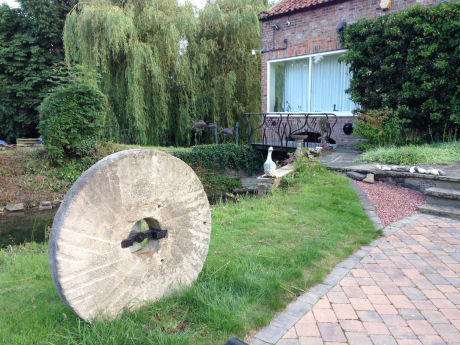 Above: Hayton Mill in 2015. Above: Hayton Mill in 2015.
Despite her genteel upbringing, Esther at 17 became romantically involved with Mathew Etty, a Hayton man, 'miller, baker and confectioner with a local fame as a maker of gingerbread.' 22 Etty's mill was leased from the Rudston estate at Hayton.23
Perhaps because Esther was pregnant, or as the result of an elopement, Rudston reluctantly agreed that his sister could marry his social inferior. Squire Rudston is said to have terminated Mathew's tenancy of the mill at Hayton, also refusing to provide a dowry. For whatever reason, the couple eventually moved to York, where a son, William, was born. William Etty would become the famous artist, knighted by Queen Victoria. There is no evidence that he ever painted portraits of Rudston Calverley Rudston or any of his immediate family.
In 1761, Squire Rudston had married Emily Stockdale from Scarborough Of their six sons, in a fairly common pattern for the issue of minor gentry, the eldest, Thomas Cutler Rudston, graduated from Pembroke College, Cambridge and took holy orders; the second became a midshipman in the Royal Navy; while the third, fourth, and fifth were obliged to take up a trade, becoming merchants in Hull. One of these, George, eventually went bankrupt after speculating in grain before the repeal of the Corn Laws in 183424 ..
Two of the brothers, including the naval officer, were lost at sea and a daughter, Anne, became insane and was institutionalised for many years. A sixth son died young . The other daughter, Charlotte, married Richard Vawser, a tenant farmer from Market Weighton. Among Charlotte's five children was George Richard Vawser [1794-1883], a second artist of Rudston descent and a landscape watercolourist of modest fame.
Squire Rudston was not universally beloved. An anonymous (and badly spelled) letter was sent to him, perhaps the result of punishment meted out to local poachers in his role as county magistrate:
Pocklington Dec 13 1793
Rudston
Our mallis is too great to bear if you don't think proper to Return all the youngs mens money again we shall fier and Destroy every thing you have and after that yoor life shall pay for all, either Day or Night, the first oppertunity so just youse your pleasure and we shall youse ours
from your friends if you please
Rudston evidently had powerful friends. The government - with the French Revolution at its bloody height in 1793-4 - was sufficiently worried by death threats of this kind to put out a royal proclamation, signed by the authoritarian Home Secretary, Henry Dundas, offering the enormous sum of £200 to anyone (other than the letter writer) willing to turn informer in the case. The local response to the offer of so large a reward is not known.25
During the latter part of his father's lifetime, the Reverend Thomas Cutler Rudston had already become a very wealthy man, having inherited Sand Hutton Hall and other property in 1800 from William Read (a close friend of the family and possibly a distant kinsman). By the terms of Read's will, and by Royal Licence, Thomas now styled himself 'Rudston-Read'. In 1803, he made a financially advantageous marriage to Louisa, daughter of Henry Cholmley of Howsham and Whitby Abbey. Louisa's maternal grandfather was Sir Rowland Winn, a great Whig magnate and builder of the magnificent Nostell Priory, near Wakefield.
Rudston Calverley Rudston died on 15 June 1805 and lies buried (his gravestone partly hidden by the organ) in Hayton Church. Within a year, Thomas - now living at Sand Hutton Manor, a fashionably Georgian house, containing work by Robert Adam - auctioned off almost the entire contents of his childhood home, the old seventeenth-century Hayton Hall. Among other lots, the sale notice offered 'Crimson Drawing Room Chairs and Sofa' and 'a capital Eight Days' Clock in Mahogany Case, Pier and Swing Glasses [Mirrors], Carpets, China and Glass'.26 Not long afterwards, Hayton Hall - perhaps in poor condition and certainly out of vogue in design and appearance - was demolished.
Sand Hutton is not far from Hayton and the Reverend Thomas Cutler Rudston-Read became 'Squarson' of his lands, serving as a magistrate, keen on shooting and foxhunting with other 'county' gentlemen. By no means completely philistine, Thomas showed evidence of interests beyond countryside pursuits. In 1824, for example, he made a handsome donation to the (later Royal) Horticultural Society towards its new garden at Chiswick. He was also trustee of Lady Lumley's Charity, associated with St Botolph's, Aldgate in the City of London.
Thomas and Louisa had eleven children. Of five boys, William Henry, the eldest, was dispatched to Eton and Trinity College, Cambridge, inheriting the Hayton estate on his father's death in 1838. The next two sons, also expensively educated at Eton, took Holy Orders after Oxbridge. The youngest two had to be content with the cheaper option of private tutors, followed by a career in the armed forces.
Charles Rudston-Read [1818-1854], the fifth son, entered the Royal Navy at 13, serving in the 1841 'Opium War' with China and on the Brazil and Pacific stations. In 1851, after leaving the navy, he took part in the Australian gold rush, later becoming a magistrate, helping maintain order on the unruly gold fields. 'Humane, popular and understanding'27 , Charles wrote What I Heard, Saw and Did on the Australian Gold Fields, published in 1853, which became best-selling account of the life of life on the diggings. He also recorded his visits to New Zealand, which included negotiating land purchases with Maoris.28
His younger brother Edward [1812-1884] fought in the Sikh Wars of 1844 and 1846, describing his adventures in letters to the family.29
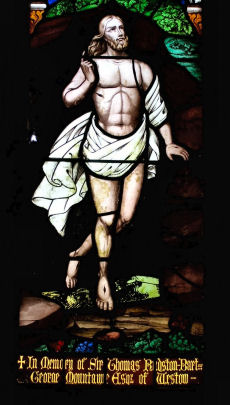 Before 1833, Thomas sold Sand Hutton Hall to the Walker family (who years later transformed the house into a monstrous Victorian pile), taking the lease of Frickley Hall, a handsome neo-Classical seven- bayed sandstone property, dating from 1760-1785, conveniently situated close to Doncaster race course. Thomas and Louisa Rudston-Read never returned to live in Hayton and the absentee Squire lies in Wragby churchyard, within the spacious grounds of Nostell Priory. Louisa died in 1829 in Hanwell, Middlesex She was buried there, sharing the grave with her youngest son, Walter, who had died two days previously, aged nine. Before 1833, Thomas sold Sand Hutton Hall to the Walker family (who years later transformed the house into a monstrous Victorian pile), taking the lease of Frickley Hall, a handsome neo-Classical seven- bayed sandstone property, dating from 1760-1785, conveniently situated close to Doncaster race course. Thomas and Louisa Rudston-Read never returned to live in Hayton and the absentee Squire lies in Wragby churchyard, within the spacious grounds of Nostell Priory. Louisa died in 1829 in Hanwell, Middlesex She was buried there, sharing the grave with her youngest son, Walter, who had died two days previously, aged nine.
At Eton, Thomas's heir, 'Billy' Rudston-Read, a near-contemporary of William Ewart Gladstone, had a low opinion of the future Prime Minister. Gladstone, he thought, was a goody-goody who studied hard, never missed a lesson, and was not at all interested in 'sport', a boy who took care not to get flogged by Eton's infamous Headmaster , Dr Keate. For Billy, on the other hand, delighted in the 'river and its playing fields and vicinity to...Ascot Heath, where the royal buckhounds often threw off [hunted] ...'30 From an early age, Billy took a lively interest (shared by at least two of his brothers) in the wider natural world. In 1826, near Datchet and not far from school, he captured an aptly-named Scarce Swallowtail butterfly in his hat, an event which found its way into the annals of lepidoptera.31
After Cambridge, Billy was called to the Bar at Lincoln's Inn, but never practised as a barrister, preferring to stay in York, living in Little Blake Street, a useful base for his horseracing and foxhunting interests. Billy resembled a character from the novels of R S Surtees (whom he may have known - the remarkable Squire Osbaldeston was a mutual friend). Billy hunted with the York and Ainsty, with Sir Tatton Sykes's pack, with the 'Holderness Hounds', as well as with the Bramham Moor Hunt. He was remembered as being 'warm-hearted, generous [and] hospitable', physically 'a heavy man', with 'a broad red face', often seen mounted on 'ponderous dark brown horses' purchased locally in the East Riding.32
In 1855, Billy's biggest success on the turf came when his horse 'Marchioness', ridden by Sim Templeman, the great Burnby jockey, won The Oaks at Epsom.33 Billy became the first chairman of the County Stand Committee of Doncaster Racecourse in 1876.
As chairman of The Yorkshire Philosophical Society (which, among other attributes, owned a public swimming bath at the corner of Museum Gardens in York), Billy made the novel suggestion of opening a Turkish bath to supplement the Society's income, but the scheme never went ahead.34 The Society has been promoting the public understanding of science since 1822.
Billy provided funds to build a school, now the Village Hall, which stands close to the site of the manor house. He may have been prompted to do this by the rise of Methodism, which was gaining a hold among the labouring classes, not least because of the complacency of many Church of England landowners. Billy also restored the church, installing the stained glass windows which can still be seen today. In his old age, after a series of falls, Billy abandoned his rackety life on the turf and the hunting field, exhorting friends and relations 'to turn from the errors of their ways.'35 He never married, dying in August 1886. Billy left £37,74336 (perhaps £2,500,000 today), mostly in trust for his nephew and heir, Trevor Wheler Rudston-Read, who would become the last Squire of Hayton.
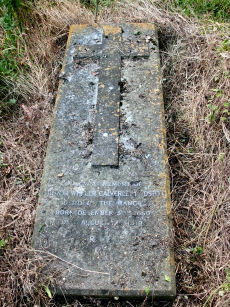 Trevor was the only son of Billy's brother, George, Rector of Sutton-on-Derwent, who had died in 1864. Educated at Wellington College, Trevor spent much of his youth in Warwickshire. His great-aunt Katharine Jesse Cholmley married Charles Repington of Amington Hall, Tamworth, Staffordshire and, after his death in 1837, moved to Leamington Priors, near Warwick.37 Trevor's father had married Teresa, grand-daughter of Sir Trevor Wheler of Leamington Hastings, 7th baronet. The Whelers were another old Midlands landed family (connected to the Sitwells) and the baronetcy dates from 1660. Trevor was the only son of Billy's brother, George, Rector of Sutton-on-Derwent, who had died in 1864. Educated at Wellington College, Trevor spent much of his youth in Warwickshire. His great-aunt Katharine Jesse Cholmley married Charles Repington of Amington Hall, Tamworth, Staffordshire and, after his death in 1837, moved to Leamington Priors, near Warwick.37 Trevor's father had married Teresa, grand-daughter of Sir Trevor Wheler of Leamington Hastings, 7th baronet. The Whelers were another old Midlands landed family (connected to the Sitwells) and the baronetcy dates from 1660.
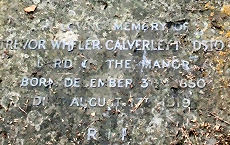 At 20, Trevor was commissioned into the Warwickshire Militia, retiring with the rank of Captain. In October 1873, he married Annie Wilkes, the only daughter of a wealthy Birmingham manufacturer, Gilbert Wilkes [1829-1882]. The Wilkes family firm owned Bordesley copper and brass rolling mill, which, among many other metal products, manufactured the fine copper wire used in the Atlantic telegraph cable projects of 1857/8 and 1866 and in several later submarine cable works. At 20, Trevor was commissioned into the Warwickshire Militia, retiring with the rank of Captain. In October 1873, he married Annie Wilkes, the only daughter of a wealthy Birmingham manufacturer, Gilbert Wilkes [1829-1882]. The Wilkes family firm owned Bordesley copper and brass rolling mill, which, among many other metal products, manufactured the fine copper wire used in the Atlantic telegraph cable projects of 1857/8 and 1866 and in several later submarine cable works.
Both families had 'High Church' inclinations and the wedding took place in the famous (or infamous) Anglo-Catholic church of Holy Trinity, Bordesley, later the subject of a prosecution for 'ritualistic' practices.38 Annie was already four months pregnant when she married Trevor. Presumably to minimise scandal, their first child - christened William George Trevor and known as 'George' - was born in Paris, at 4 rue d'Alger, (now the Hotel La Tamise), the following February. Prudently, the christening at Packwood Church did not take place until 27 June 1874.
At first, they lived at The Haugh in Packwood, not far from Chadwick Manor, the enormous neo-Jacobean mansion, set in 400 acres of Warwickshire countryside, recently been built by Annie's father. There is no record of any snobbery on the part of the Rudston-Read family about marrying into 'trade'. Historically, some of the Rudstons had been drapers, both in Hull and London and, with the worsening of agricultural depression in the 1870s, landed families were often willing to take a financial lifeline from the newly-rich manufacturing classes. Social tensions may have been eased by the handsome dowry, possibly as much as £25,000, which Gilbert settled on his daughter (and any issue of the marriage), carefully ensuring that moneys would not pass to her husband.39 .
In 1878, when Billy was ageing fast and inheritance was in the air, Annie and Trevor moved to Allerthorpe Hall, a few miles from Hayton. This early nineteenth century country house, originally a handsome 'box', had been rather spoilt by Victorian additions made when the building housed a boarding school for boys in the mid-century. The couple had two daughters, Annie Teresa (1875) and Evelyn Maud (1880). A second son, born in 1884, lived only a few hours.
Billy Rudston-Read's will stipulated that Trevor should drop the 'Read' from his surname. In 1886, by Royal Licence, Trevor changed his family's surname from Rudston-Read to 'Calverley-Rudston' (perhaps plain 'Rudston' did not seem a sufficiently dignified surname for the latest Squire of Hayton).
Trevor took his squirearchial duties very seriously. Remembered as 'a charming personality...always accessible to anyone'40 , he was (of course) a county magistrate, as well as chairman of the governors of Pocklington Grammar School and of the Board of Guardians of the local workhouse. He became Deputy Lieutenant for the East Riding in 1870. Unsurprisingly, Trevor was also 'a strong churchman' and an active member of the local Conservative party.
With the idea of resuming residence at Hayton, Trevor commissioned costings and designs for a new house to be called 'Hayton Hall' in 1887. Estimates ranged from £5,100 to £7,400.41 A local architect, William Hawe of Beverley, also submitted a quotation. Hawe is described by Pevsner as 'accomplished...producing boldly detailed villas and commercial buildings...'42 , but Trevor's venture was soon abandoned.
Apart from the suicide of a maid, life seems to have been uneventful at Hayton and Allerthorpe until 28 December 1899, when Annie - who had been suffering from heart trouble - died in Scarborough, where she had been under the care of Dr Cuff, a well-known Yorkshire physician who treated many upper-class patients. Annie was only 45. Of the immediate family, only Trevor and her younger brother, Gilbert Wilkes, attended the funeral at Hayton Church. The three children were reportedly too upset to attend the service.
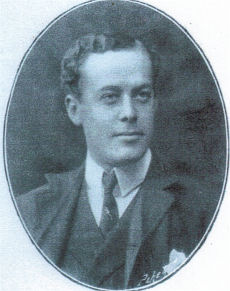 The tragic death of his mother gave George Calverley-Rudston (pictured left & courtesy East Riding Archives) a substantial inheritance of £10,000 from the trust set up by Gilbert Wilkes for Annie's marriage in 1873. Unfortunately, George proved to be a classic 'black sheep' and his disastrous personal life brought an end to the long-standing connection of the Rudstons with the village of Hayton. The tragic death of his mother gave George Calverley-Rudston (pictured left & courtesy East Riding Archives) a substantial inheritance of £10,000 from the trust set up by Gilbert Wilkes for Annie's marriage in 1873. Unfortunately, George proved to be a classic 'black sheep' and his disastrous personal life brought an end to the long-standing connection of the Rudstons with the village of Hayton.
Educated at Aysgarth Preparatory School and Harrow (where he was a contemporary of Winston Churchill), George appeared to settle in to the life of a country gentleman. By 1903, tall, handsome and charming, he had become a Lieutenant in the East Yorkshire Imperial Yeomanry, a JP, and a county councillor. The following year, however, respectability crumbled. George was forced to flee the country to avoid bankruptcy and possible prosecution for fraud. Gambling and the high life had taken their toll of his inheritance and he was now desperately short of money (unforgiveably, he even borrowed £3 from a friend's butler...).
Various strategems were discussed with his father, family and legal advisers. In the end, George was shipped off to Wyoming as a 'remittance man'. There he teamed up with ‘Buffalo Bill’ Cody, shot moose with Prince Francis of Teck (‘a bit of an ass’), and somehow managed to buy the Horse Shoe Ranch in Sheridan County. During WW1, unlike many other former army officers, George, who had taken US citizenship in 191143 , did not return to fight for the country of his birth, remaining in the USA for the duration. He returned to England only twice, for brief visits in 1920 and 1921, when Trevor's estate was being wound up and possessions distributed between the children. George did not marry and in 1939 died in Dayton, Wyoming, remembered uncharitably as 'a boring old alcoholic.'44
In 1903, Annie Teresa married Captain Oswald Thomas O'Kelly Webber, Royal Engineers, whose family seat was Kellyville, Queen's County (now Co Laois) in Ireland, where the Webbers were a prominent 'Ascendancy' family. The couple had first met the previous year at a ball given by the Barstow family (cousins of Oswald Webber) at Garrow Hill House, York. Of their two sons, Evelyn had no issue, but descendants of William Rudston Webber - a rubber planter in Malaya before WW2 - and his wife Joan Wilkinson, now live in Australia.45
Evelyn Maud married her second cousin, Harry Rudston-Read, in 1917. Harry, a former officer of the Berkshire Yeomanry Cavalry, had business interests in Mexico, later inventing a form of fire extinguisher and the 'Sparklets' soda water bulb. Annie Teresa, who had moved to England with her husband after the 1916 Easter Rising, died in 1933, her sister Evelyn in 1940. Evelyn and Harry's marriage was childless.
Trevor did not re-marry after his wife's death. In 1915, noting that 'the family was scattered and he was living alone', Trevor decided to sell Allerthorpe Hall, opting to live in London. Wartime was not the best moment to put property on the market. There was only one bidder at the 'upset price' of £1500. Robert Kay, a York solicitor, bid this sum on behalf of Rhodes Brown, owner of Brown's Store in York..46
After an operation in London, Trevor died in August 1919. The Hull Daily Mail saluted ' one of the foremost figures in the East Riding, both in public service and in political circles.'47 His body was brought back by train to Pocklington, where the coffin was met by 'the oldest retainer' of the Hayton estate. A two hour evensong in Hayton church was followed by an all-night vigil, before the funeral, which was attended by a large congregation from all walks of life.48
Trevor's simple tombstone, inscribed with the words 'Lord of the Manor' can be found in the churchyard, next to that of his wife.
[Both gravestones appeared sadly neglected on a visit to Hayton made in August 2014].
Andrew Rose, barrister and author, is a great-nephew of Annie Calverley-Rudston. He is most grateful to Sylvia Webber, author of Her Story in Four Centuries (Authors Online 2010) and to Joanna Larter of East Riding of Yorkshire Archives for their assistance.
©Andrew Rose 2015
Many of the the following reference links have ceased to work as active links. I have left them visible but not active so that the sources can be recorded.
1 see Freeman, P at https://groups.google.com/forum/#!topic/soc.genealogy.medieval/yzlV6LIu9jc
2 see http://www.ironmasters.hull.ac.uk/resources/Haytonwebcomm-i.txt
3 see Freeman, P, http://archiver.rootsweb.ancestry.com/th/read/GEN-MEDIEVAL/1999-07/0932337420
4 see Burke, John A Genealogical and Heraldic History of the Landed Gentry and Commoners of Great Britain and Ireland (1838) p362 et seq
5 see Freeman, P, loc sit
7 East Riding of Yorkshire Archives (ERYA) DDCR/2/1/1/1
8 see eg Dodds, M H and R The Pilgrimage of Grace 1536-1537 (Cambridge University Press 1915) passim
9 Bush, M L The Pilgrimage of Grace (Manchester University Press 1996) p125
10 Webber, S Her Story in Four Centuries (Authors OnLine 2010) p14
11 http://www.historyofparliamentonline.org/Steyning 1547
12 Spink H H The Gunpowder Plot and Lord Mounteagle's Letter (Simpkin, Marshall and Kent 1902) p14
13 www.gunpowder-plot.org/wrighthistory.asp
14 www.wheatleyhill.com/Thornley/Thesis%20Chapter%203.htm
18 In 'Mediaeval Hayton - The Valley of the first ironmasters': www.ironmasters.hull.ac.uk/resources/hayton-medieval.pdf
21 Robinson, L William Etty: The Life and Art (MacFarland & Co Inc 2006) p24
22 Robinson, L op cit p26
25 London Gazette 1794: https://www.thegazette.co.uk/London/issue/13611/page/28/data.pdf
27 Australian Dictionary of Biography http://adb.anu.edu.au/biography/read-charles-rudston-4454
31 Morris, Rev F O A History of British Butterflies (Groombridge & Sons 1864) at p6
34 see http://www.ypsyork.org/resources/articles/from-the-archives/
36 https://probatesearch.service.gov.uk/Calendar?surname=read&yearOfDeath=1886&page=5#calendar
37 see eg ERYA DDCR/5/6/2/24
38 see eg http://ahistoryofbirminghamchurches.jimdo.com/aston-ss-peter-paul/holy-trinity-bordesley/
39 see https://probatesearch.service.gov.uk/Calendar?surname=Wilkes&yearOfDeath=1883&page=2#calendar: UK Wills and Probate 1883
40 Yorkshire Post 19 August 1919
42 Pevsner, N; Neave D Yorkshire: York and the East Riding (Yale University Press 2005) pp92-93
43 see http://www.rootsweb.ancestry.com/~wysherid/declarat4.htm
44 The Sheridan Press 18 June 2010
45 Webber S, op cit passim
46 Hull Daily Mail 20 May 1915
48 Yorkshire Post 22 August 1919
|

